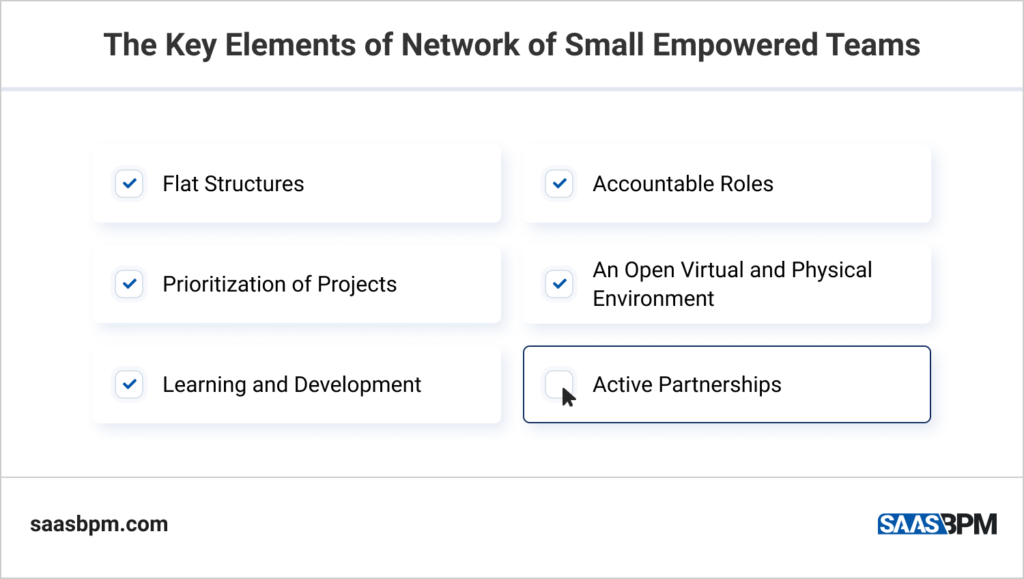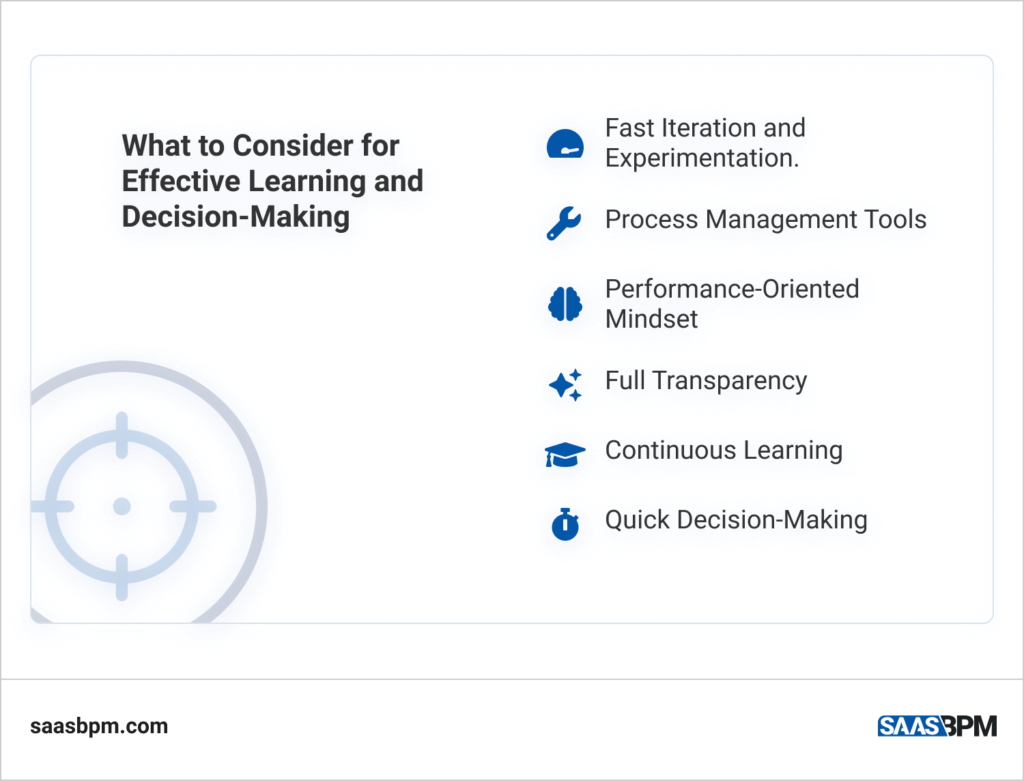Surviving and thriving in today’s digital economy is hard work. Which is why many organizations are making the shift from traditional to an agile business model.
Business agility is about achieving great improvements in performance. It’s a methodology that focuses on maximizing profit, enabling faster and better team collaboration, encouraging innovation and delivering great value. Hence, by becoming agile companies can do everything faster and smarter – from product development and resource allocation, to decision making and quick response to market, client demands, and internal changes.
To ensure your organization thrives, as a business owner, you have to develop and instill new mindsets and capabilities within your team members. Agile is more than using the right tools, it’s also a cultural shift that requires learning and development. Hence, it’s essential to foster an atmosphere of agility, resilience and adaptability.
In this article we will discuss the 5 main characteristics of an agile business, and help you create a lean and agile organization prepared for everything that the future holds.
1. Balancing Strategy and Leadership

The first step towards business agility is becoming clear about who your business creates value for and how. Agile companies are customer focused, seeking to meet their clients’ needs throughout every stage of the customer journey. Additionally, their culture is concentrated on creating value for and with all stakeholders – employees, partners, investors, and communities.
To create a lean and agile organization and sustain business growth, it’s essential to balance strategy and leadership – i.e. running a business and innovating a business. Here is how you can do this.
Strategy
The first step of meeting consumer needs is creating a transformational business strategy. This involves developing and establishing flexible approaches to value creation amongst all involved team members.
To make this possible, it’s vital that your agile organization has a shared vision and purpose. This, according to McKinsey, is ‘the North Star’ that helps people feel emotionally and personally involved in the process. This as a result will strengthen the morale and trust in your company, thus encouraging long-term relationships between your business and your customers, employees, and potential partners.
Furthermore, lean and agile organizations have a sensible approach to value creation. They are capable of anticipating changes in the market and the customer preferences, in order to capture opportunities on time.
Some ways to improve your agile business approach include:
- Collecting insights and feedback from various stakeholders.
- Using tools like customer journey maps, so your business can effectively identify new opportunities to better serve your customers.
- Gathering customer specific insights through formal and informal mechanisms, which can include online forums, events, interviews, or incubators.
These approaches help organizations innovate their business models, initiatives and strategy, and allocate resources to where they are needed most.
Pro Tip: Always keep an eye on your business environment and regularly examine your business processes to decide whether they need to be improved, terminated, standardized, automated, or allocated to a different team.
Leadership
The second step towards business agility is to have leadership that is closely involved in the process. Company leaders play an essential role across the entire organization. They bring clarity, provide actionable, strategic and clear guidance, set priorities and outcomes and make sure that all team members put their best foot forward.
You should ensure that your leadership is able to help your teams deliver tangible value to your clients and stakeholders. This means providing regular coaching and feedback to your team so they can be confident in approaching any business challenge.
Furthermore, instead of solely creating directors, planners and controllers, the leadership of any lean and agile organization should encourage its teammates to be visionaries, coaches and architects. It should empower those with the most relevant competencies to collaborate, and deliver exceptional results.
2. A Network of Small Empowered Teams

Team members are the backbone of any organization. To implement an agile business model you need to focus on creating a close network of small empowered teams. This means, you need to set clear standards of transparency, accountability, expertise, alignment, and collaboration.
To ensure your teams operate effectively, it’s essential that you implement a stable ecosystem focused on the following elements:
- Flat Structures. To support the processes for creating value for the customers.
- Accountable Roles. So that team members can manage their tasks well and easily collaborate with one another.
- Prioritization of Projects. Streamline the project management process to ease decision making and provide guidance where needed.
- Learning and Development. Encourage team members to share their knowledge and experience, and improve their skills and capabilities.
- Active Partnerships. Make it easier for internal networks to collaborate with external networks so your organization has access to the best talent for co-developing new products and generating insights.
- An Open Virtual and Physical Environment. Create a space where your team feels empowered to do their job well.
Remember your small teams are the building blocks of your agile organization. The more empowered they are, the better your business will perform.
3. Effective Learning and Decision-Making

Agile businesses need to be quick on their feet. They have to be able to think fast and act even faster. Therefore, they need to establish lean operations, design thinking practices, agile development, and more all aimed at improving their ability to innovate.
Shifting towards such a rapid cycle model of project management requires moving away from traditional static planning, budgeting and reviewing, towards quarterly cycles and dynamic management systems.
Here are a few aspects to consider:
- Fast Iteration and Experimentation. Producing a minimum viable product with the help of design thinking techniques.
- Process Management Tools. Improving standardized ways of working and facilitating better communication and interaction across teams.
- Performance-Oriented Mindset. Conducting frequent formal and informal feedback sessions as well as open discussions to address potential performance setbacks and opportunities.
- Full Transparency. Granting every team member quick and easy access to all the information they need.
- Continuous Learning. Creating a collaborative environment where everyone can learn from one another, exchange knowledge, and help improve and develop their capabilities.
- Quick Decision-Making. Providing deep insights to support the teams when making important decisions.
4. Next-Generation Technology

In addition to rethinking current organizational models, shifting towards an agile business model requires the right technology stack. Business agility is about improving flexibility and speed hence innovating the technologies used in product and process development is key.
The digital economy has completely transformed consumer preferences and habits. This is why in order to be agile, businesses need to adopt best practises and next-generation technology to be able to meet such dynamic market conditions.
The business areas in which such technology would play the most important role are business process management and real-time communications. The two are closely linked to one another – if there’re inefficiencies with internal and external communications, work-management will be affected too.
However, when communications and work processes are improved, companies can benefit from fewer handovers and faster production, testing, deployment. What is more, teams will be much more efficient when collaborating with one another, prioritizing their work and managing their time.
Businesses That Have Made Agile Work
Spotify

Spotify uses an autonomous and people-centric approach to agility, that combines technology and culture. The focus is placed on organising smaller teams around work, instead of following specific practices for the sake of improving quality, innovation, productivity, accountability and collaboration.
This model champions autonomy among teams, called Squads. Each Squad is given the chance to select an agile framework to their liking (Kanban, Scrum, Scrumban, etc.), and all Squads are organized into Guilds, Trios, Tribes, Alliances and so on, to help with work process agilment and knowledge transfer.
IBM

IBM’s Global Technology Services (GTS) unit uses an agile methodology called Agile for Services to manage business growth and IT complexities. The focus of this approach is to develop diverse teams, build collaborative spaces and maintain a sustainable pace of work, so that projects can be completed faster, with increased customer satisfaction.
It uses iterative product development, where incoming work is divided between small teams, each equipped with all necessary skills to be able to focus on a set of smaller sup-tasks. The separate steps of the projects are then completed in “sprints”, and every two weeks teams and clients sync with one another to adjust the current priorities.
Cisco

Cisco switched their waterfall process development method to an agile approach that concentrates on having the teams stay in touch with clients in real business time. Similarly to IBM, Cisco’s teams also work in sprints that can last between 2 weeks and 2 months. During the sprints, the teams collaborate with each other to address all quality and technical concerts that their customers have shared, so adjustments can be done in a timely manner.
Additionally, Cisco’s teams use security tools that help reduce service disruptions within client networks by offering network insights. This way they are able to provide top-value features that successfully meet client’s expectations and needs.
Conclusion
Adopting an agile business model means establishing smart working practises that allow your organization to effectively manage challenges through collaboration and innovation. When embraced correctly, this model can help improve business performance, while combining technology with culture.
The transition from traditional to agile requires on-going efforts throughout all business units. It begins with a transformational strategy and leadership and goes on to building small, empowered teams where rapid process learning and development happens between dynamic and passionate people.

